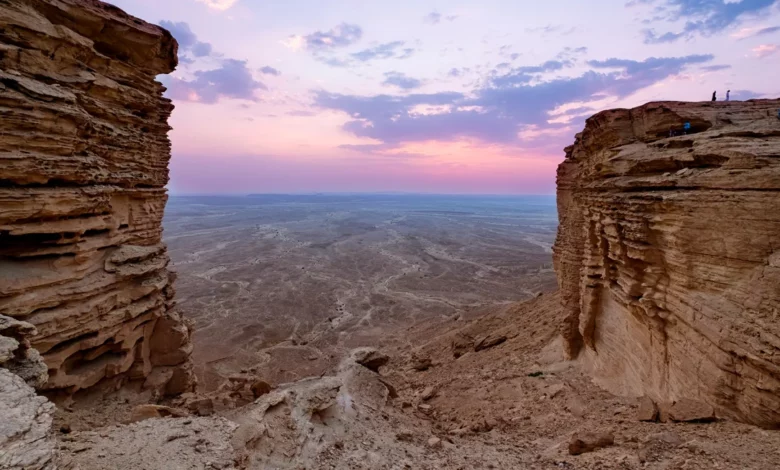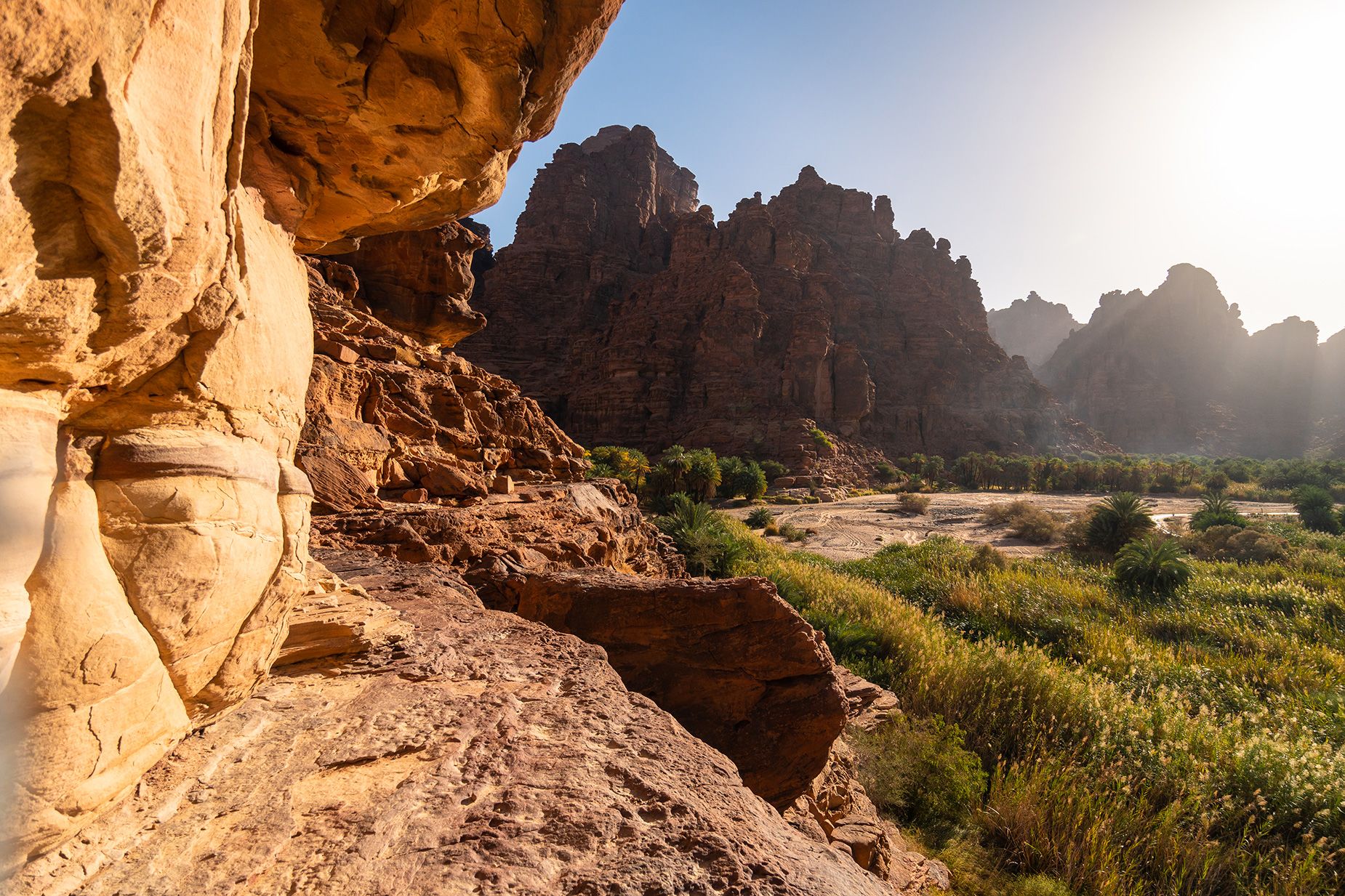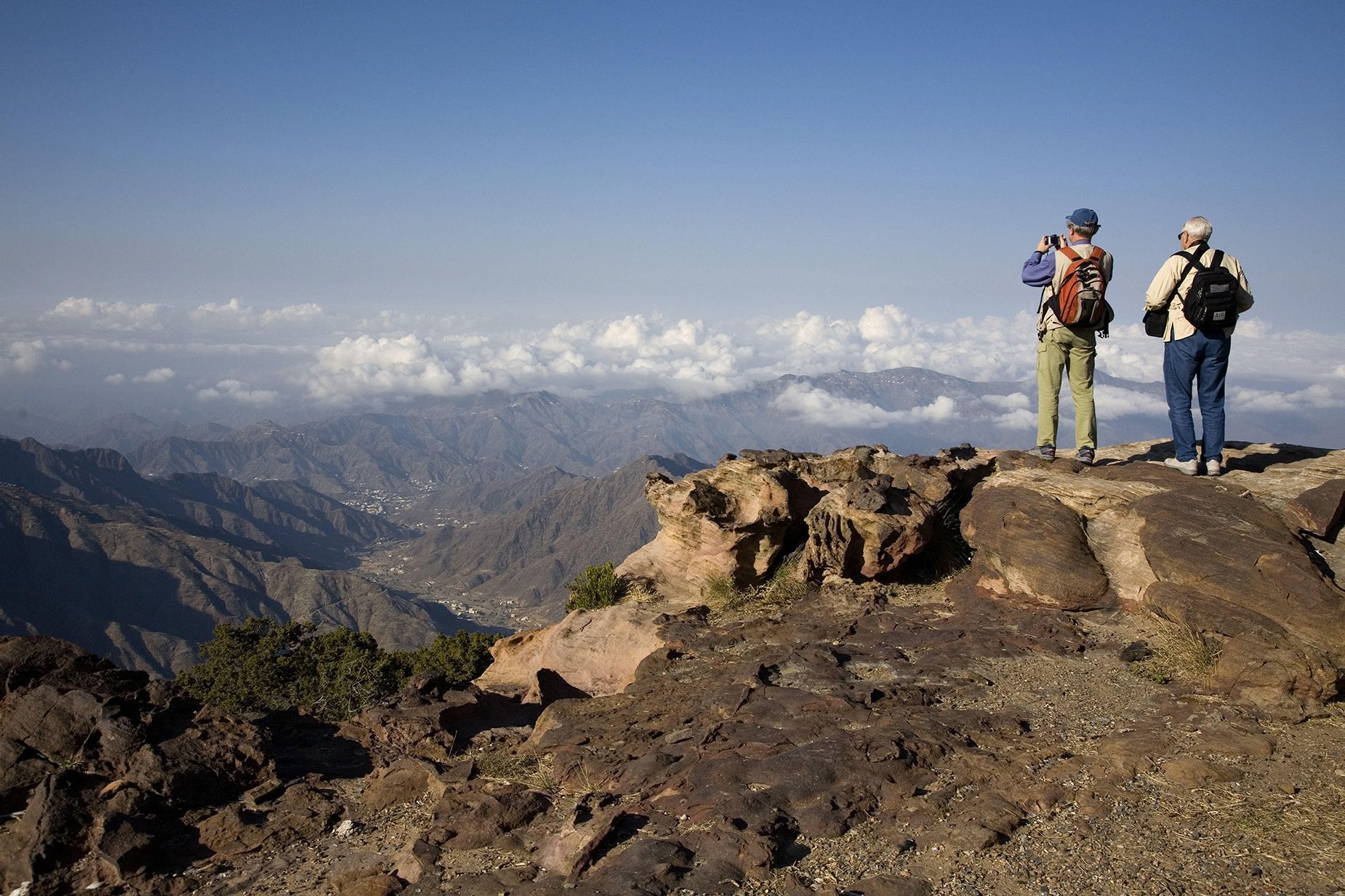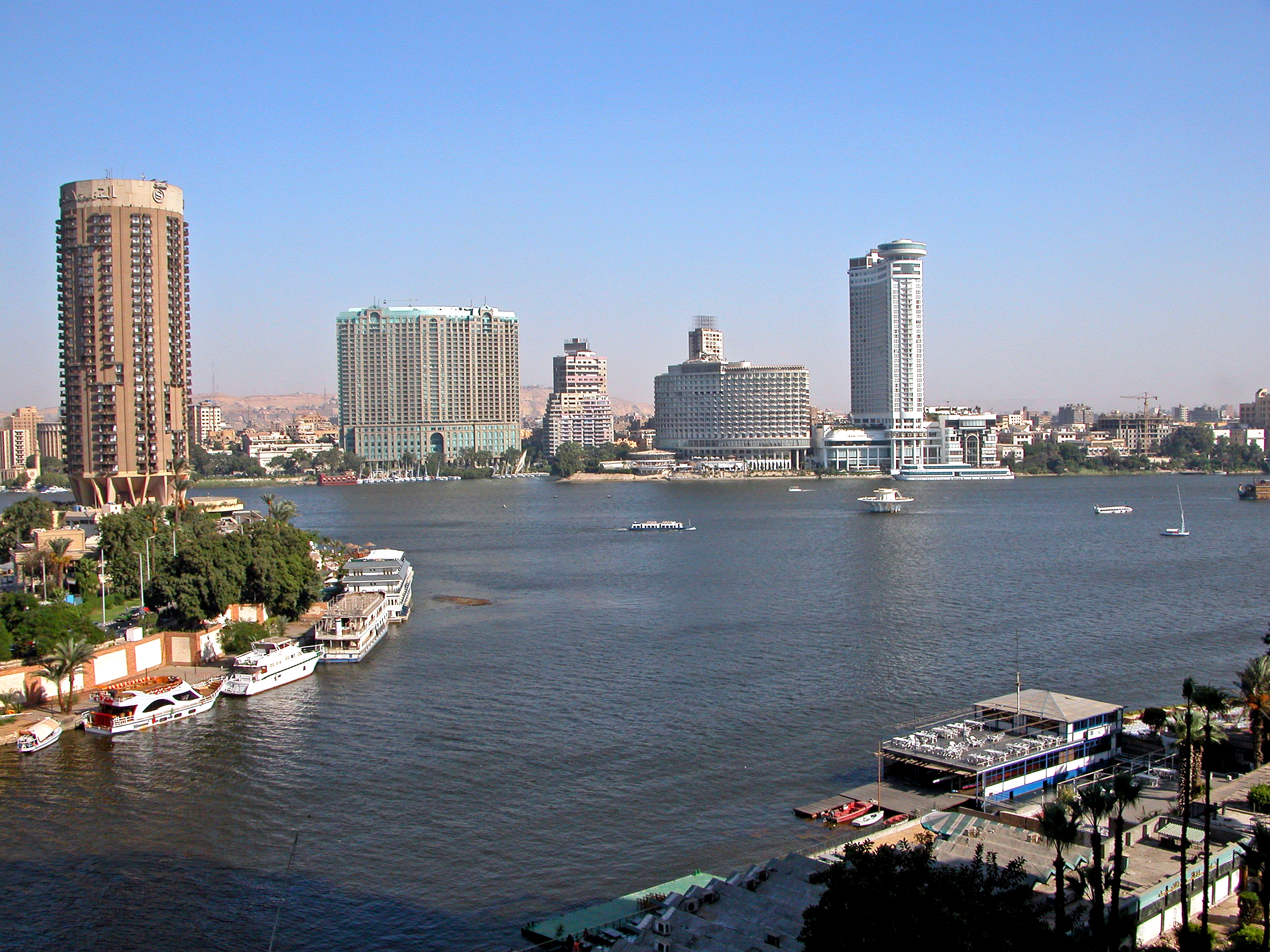
Editor’s Note: This CNN Travel series is, or was, sponsored by the country it highlights. CNN retains full editorial control over subject matter, reporting and frequency of the articles and videos within the sponsorship, in compliance with our policy.
“It’s very liberating, it opens your mind,” says Hoffler, a hiking consultant who is helping to develop new trails in Saudi Arabia.
“It really makes you dream and it’s the best sleep I’ve ever had. I sleep better in the desert than anywhere else in the world.”
But one night in the vast Hisma desert in northwest Saudi he says he had bedded down in a wadi, a dried-up riverbed, when he awoke to a lot of “hustle and bustle” nearby.
Dozing off again, he opened his eyes in the morning to the sight of four camels snuggled around him.
Rising quietly, he saw six more and then realized a herd of 20 camels had descended into the wadi to sleep.
“I guess they felt safe sleeping next to a human being in the desert,” he says.
Hoffler has spent 15 years developing trails in Egypt’s Sinai Peninsula and Jordan and is now working with local guides, including Bedouin scouts, to develop Saudi’s ancient ways for local and international hikers.
And he insists the notion of Saudi Arabia as just sand, desert and heat is just a mirage.
“Saudi Arabia is absolutely vast in scale, that is the first thing that strikes me,” he says.
Year-round destination

“It’s also incredibly diverse, you get everything from jet black volcanic lava fields to red sandstone deserts like you might see in Wadi Rum (in Jordan), to high granite ranges like you’d see in the Sinai (in Egypt), to green forested rolling mountains in the south.
“The natural beauty of it is extraordinary, it’s one of the most visually spectacular places, if not the most spectacular, that I have ever seen in the Middle East.
“Saudi Arabia feels very wild, very beautiful, it feels untrodden, perhaps more than other destinations it feels new.”
Hiking is a new but increasingly popular weekend pastime for some Saudi city dwellers from the west coast or the capital Riyadh, with a number of accessible short walks.
About an hour’s drive from the capital, hikers can easily reach the sandstone escarpment of the Tuwaiq Mountains where there are numerous clifftop viewpoints, including one dubbed “Edge of the World.”
Al Wahbah, a four-hour drive northeast of Jeddah, is a volcanic crater 250 meters (820 feet) deep and about 2 kilometers (1.2 miles) across on the western edge of a barren plateau. It’s about a 45-minute walk from the rim down to the white center, which is composed of sodium phosphate crystals.
Wadi Al Disah is a green, spring-fed valley, known as “valley of the palm trees,” surrounded by towering sandstone cliffs in the mountains of southwest Tabuk province noted for its serene atmosphere, rock carvings and remains of ancient fortresses.
Another well-known but less-travelled hike is to Jabal Abyad, which means White Mountain in Arabic, named for its ash coating. Jabal Abyad is Saudi’s tallest volcano at 2,093 meters (6,867 feet), situated in the huge Harrat Khaybar lava field north of Medina. The mountains outside Mecca and Taif, such as Al Hada, also offer hiking trails.
But while there are standard tourist trails available, with licensed guides and tour companies, the infrastructure and breadth of trails is “embryonic,” according to Hoffler, although “the potential is there” to develop Saudi Arabia into “one of the most outstanding hiking destinations in the world.”
And with cooler temperatures in the highlands, it makes for a year-round destination.
“That’s what we’re working on for the next couple of years, proper trails for tourists from outside Saudi to come and experience the scenery and nature that Saudi offers,” says Yasmin Gahtani, a rock-climbing instructor and managing director of the Saudi Climbing and Hiking Federation (SCHF), whose role is to promote healthy activity, tourism and competitive sport.
“It still needs to be more properly developed for people to go independently. There are still no guidebooks, it’s all word of mouth or through hiking guides, of both genders, to take people out. The country is safe, of course, but you’ll have a better experience if you have a map of the trails, and we’re still not there.”
Epic views

Hoffler is based in the Hejaz mountains – which he says is “one of the most fabled ranges of Arabia” – the long chain that runs from midway up the Red Sea coast north to the Gulf of Aqaba and Jordan. The highest point is Jabal Al-Lawz in the far north at more than 2,500 meters above sea level and one of the only places in Saudi Arabia to receive regular snowfall.
“When I’m up on the high peaks of the Hejaz you can look out over the Red Sea and on a clear day you can see the high jagged peaks of the Sinai and on a very clear day you can even see the highlands of Africa, which is absolutely spectacular,” says Hoffler.
The mountains inland of Umluj in the northwest Tabuk region offer another unique landscape to explore, says Hoffler, made up of cinder cones (conical hills of volcanic material), lava fields, known as harrat in Arabic, and huge, gaping lava tubes “big enough to drive a bus into.”
The Briton also regularly adventures out into the huge Hisma desert, made up of red sand and huge sandstone rock formations, which stretches up into Jordan where it encompasses Wadi Rum.
“All of these landscapes are criss-crossed by paths that are very old, some hundreds, some many thousands of years old, passed down between different peoples and different generations,” he says.
The issue in the Saudi Hisma desert, he says, is that “drift” of the semi-nomadic Bedouin population to the towns means many paths have fallen into disuse.
“What we typically find is those paths are in quite a poor state of preservation, it’s like an archaeology of walking,” he says.
When he does meet Bedouin on the trails, Hoffler says he’s “only had the best experiences with them.”
“The Bedouin are famous around the world for their hospitality, and they offer a space that feels like a refuge wherever you are in the desert,” he says. “They’ll always make sure you’re well fed and have a cup of tea in your hand and have everything you need before you move on.”
‘Magical place’

Further south below Jeddah, the Sarawat mountain range stretches down to the southwest Asir region, which is home to Saudi’s highest mountain tops, including Jabal Sawda and Jabal Ferwa’, both more than 3,000 meters (9,840 feet) high. Al Soudah is a tourist hub with a cable car to the top of Jabal Sawda with government plans to develop a luxury destination with boutique hotels known as Soudah Peaks as part of Vision 2030.
It’s another area rich in potential for hiking and camping. It’s also where Saudi-Lebanese mountaineer Nelly Attar trains, including for both her ascent of Everest in 2019 and her record-setting feat when she claimed the title as the first Arab woman to climb K2, the world’s second-highest mountain, in 2022.
There are two wet seasons: one between February and April and another between July and August and temperatures rarely reach the soaring heights of the coast.
“Lower down you see a lot of juniper trees, lots of lush vegetation, cacti, fruits, animals,” she told CNN. “There’s some areas that look like you’re on Kilimanjaro and they look quite tropical.
“We see baboons here a lot of the times. It’s magical. I come to train, but I actually leave feeling at peace and feeling so calm because there’s no one else on the trail.
“I didn’t think I’d find a gem like this in the GCC [Gulf countries]. People perceive Saudi to be mainly a desert, but there’s so many diverse landscapes. I’ve been living here most of my life and I have not seen most of what Saudi can offer, and I’m so excited for this country to open up.”
The capital of Asir is Abha, the popular hilltop city at about 2,270 meters (7,450 feet) high, known for its mild climate, fortresses and mountain access and views. It is serviced by Abha international airport.
About 120 kilometers north of Abha lies the town of Tanomah, often shrouded in fog but popular for its waterfalls, juniper and pine forests and outdoor pursuits in Al Sharaf park.
“Tanomah has beautiful rock for climbing and beautiful trails to hike,” says Gahtani.
“I love this place. It’s very magical, I don’t know why, I can’t explain it, but it has this really nice energy and everyone who goes there feels the same way. It is surrounded by cliffs of rocks so you feel like you’re very disconnected from the world which is lovely.”
She adds: “Hiking in Saudi Arabia is very virgin, there are so many untouched locations and it’s very serene.”




